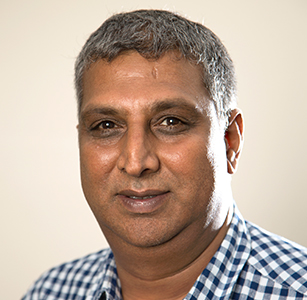
A/Prof Subash Heraganahally
The overall bronchiectasis disease burden is higher in a cohort of Aboriginal Australians in the Top End than in international and non-Aboriginal Australian cohorts.
The shameful local data comes from 459 adult patients with chest CT-confirmed bronchiectasis diagnosed in the NT between 2011 and 2020. [link to cohort data in The MJA here]
Associate Professor Subash Heraganahally, director of respiratory and sleep medicine at the Royal Darwin Hospital, told TSANZSRS 2024 that Aboriginal Australians with bronchiectasis were younger compared to international bronchiectasis registry participants from Australia, Europe, India, Korea and the US.
Smoking rates were higher at 85% compared to other registry cohorts (22-46%). As well, comorbidities were more common: cardiovascular disease (43% v 4-32%); diabetes (50% v 6-14%) and COPD (83% v 14-37%).
Spirometry results showed a median FEV1 of 38% predicted in Aboriginal Australians compared to 61-77% in other cohorts.
Sputum microbiology showed H. influenzae (57%) isolated at 3.4 – 6 times the rate of other registry cohorts.
Chest CT demonstrated multi-lobar and lower lobes involvement in 73% and inhaled pharmacotherapy use was recorded in 62% with long-term antibiotics in 5%.
Associate Professor Heraganahally told the limbic that the local prevalence of bronchiectasis in Aboriginal people at 19 per 1,000 was probably the highest reported in the world.
“This is probably underestimated … because we used CT scan, the gold standard for diagnosing bronchiectasis. To get a CT scan done in remote indigenous communities, some almost 1,000 kilometres away, is very difficult. So a lot of these patients would have bronchiectasis but they didn’t have an opportunity to undergo a CT scan.”